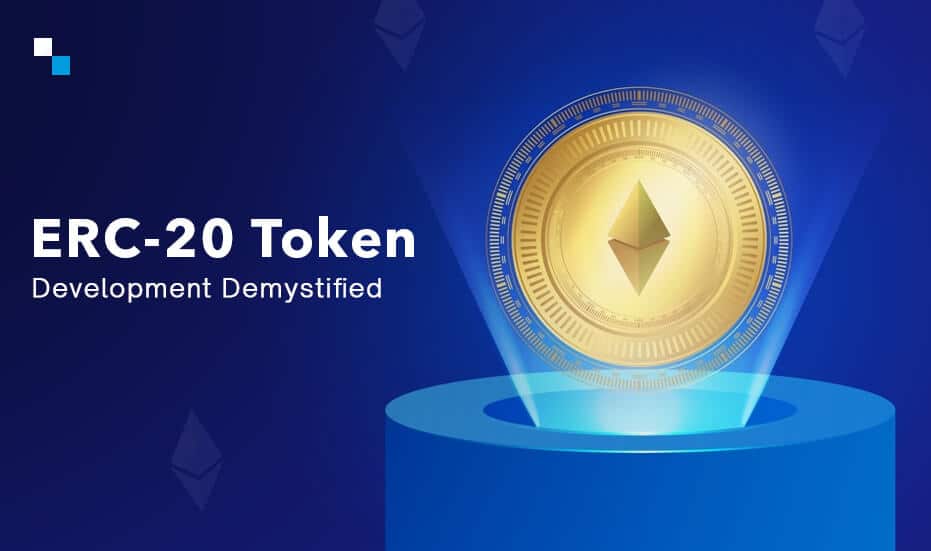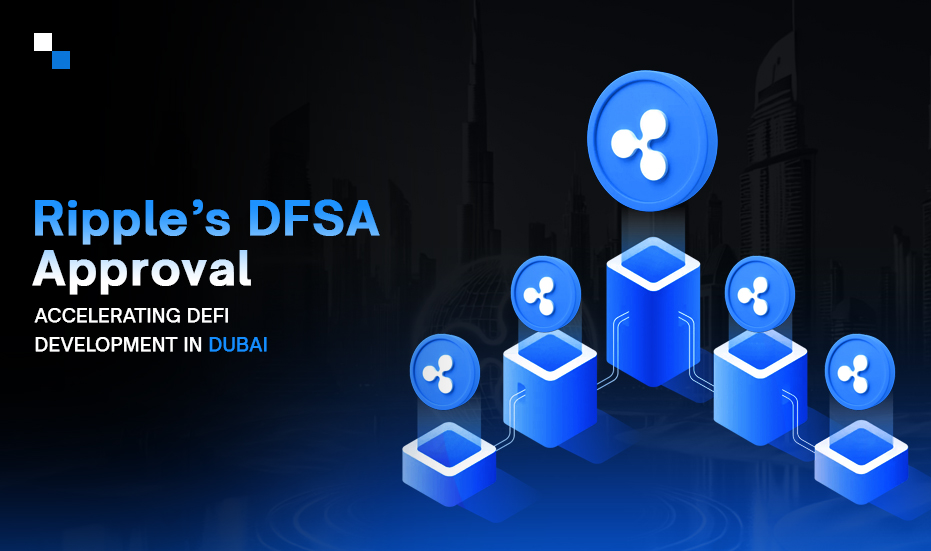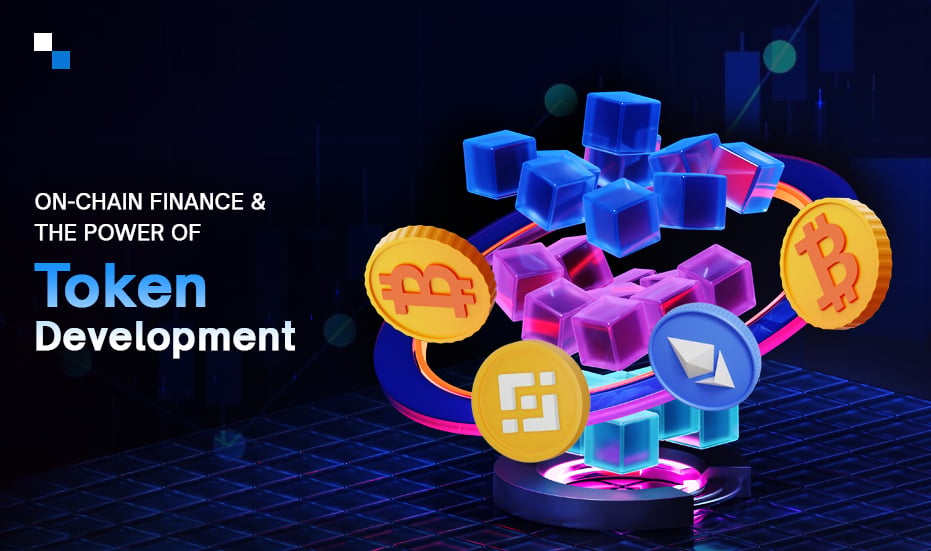
Leading dApp Development Companies: Creating a Secure Financial Future
August 28, 2023
Bring Web3 Revolution with Blockchain in Beauty Industry
August 29, 2023Blockchain and cryptocurrency have become buzzwords in the world of technology in recent years. When we speak of blockchain and digital assets, we simply can’t ignore mentioning Bitcoin and Ethereum, the two most famous and oldest names in the crypto arena. Although Bitcoin laid the foundation of the blockchain world, Ethereum emerged as an evolved child of the family and became much more successful than its ancestor. Today, ERC20 token development is in high demand, which is based on the Ethereum blockchain network’s ERC20 token standard. Why so? It’s because Ethereum is unlike Bitcoin, as it allows smart contracts that provide better security and more power to the tokens to be transacted from one wallet to another without any hassle.
ERC20 tokens represent a virtual currency and can be used to buy, sell, trade, lend, or borrow digital money. You can create unique tokens with the help of a seasoned token development company.
What are different token standards and why ERC 20 tokens are so popular?
There is a certain set of rules and conditions that defines the standard of a token and ensures how it functions. In simple words, ERC (Ethereum Request for Comment) represents technical guidelines for the development of smart contracts. There are different types of ERC token standards that clearly define the parameters on which the name registries, library-package formats, and set of smart contracts perform their basic functions. Token standards play a significant role in the creation of various types of digital assets, such as coins and tokens, on a blockchain.
Currently, the most common Ethereum token standards include ERC-20 (fungible token standard) and ERC-721 (non-fungible tokens or NFTs). There are more token standards including ERC-777 (a newer version of ERC-20), ERC-1155 (allows the development of fungible and non-fungible tokens through a single contract), and ERC-4626 (it defines a standard interface for tokenized vaults).
However, people are more enthusiastic about ERC20 token development because of the following benefits:
- Interoperability: ERC-20 tokens comply with widely accepted standards that make them fairly compatible with the Ethereum ecosystem.
- Exchange Listings: They are uniform in nature which makes it easier to trade them seamlessly through numerous cryptocurrency exchanges, enhancing liquidity and market accessibility.
- Diverse Use Cases: ERC-20 tokens act as cryptocurrencies, utility tokens, and even security tokens, and support a wide range of applications.
- Smart Contract Integration: They are programmable tokens, that enable a token development company to create decentralized applications (dApps) and implement complex smart contract logic.
- Fundraising: The evolution of fundraising through ICOs and token sales has been made possible by ERC-20 tokens.
- Wallet Support: They are supported by a range of Ethereum-compatible wallets, improving user administration and accessibility.
- Asset Tokenization: Physical assets, like real estate or works of art, can be tokenized using ERC-20 tokens to make them easier to trade and more accessible to a larger variety of investors.
- Running Loyalty and Reward Campaigns: ERC-20 tokens can be used to run customer reward and loyalty programs, which can be utilized to encourage return business and client involvement.
- Global Accessibility: ERC-20 tokens are accessible to a global audience, and their standardized nature ensures that users and developers alike can easily understand and utilize them without facing steep learning curves.
ERC-20 Token Development: A Step-by-Step Guide
The creation of an ERC-20 token involves different steps. Before you get started with the process, you must define the mandatory functions on which the smart contract can be implemented and made operational. Here are some of the essential ERC functions:
- TotalSupply: It is a method of specifying the overall supply of your tokens. Once it is achieved, the smart contract will forbid the creation of new tokens.
- BalanceOf: A method called BalanceOf returns the quantity of tokens that are stored in a wallet address.
- Transfer: A technique of taking certain tokens out of circulation and giving them to a user.
- TransferFrom: Tokens can also be transferred between users using a different type of transfer technique.
- Approve: By taking into account the overall supply, this method determines if a smart contract is authorized to give a user a specific number of tokens.
- Allowance: This method resembles the approved method with the exception of determining if a user has enough balance to send a specific number of tokens to another.
ERC-20 tokens also include these three crucial fields in addition to all of the aforementioned methods:
- Name: The name of the token
- Symbol: The ticker used to symbolize the currency
- Decimals: The amount of decimal places that can be displayed when presenting balances to users.
The easiest way of developing ERC20 tokens is to choose the right token development company. However, you must also be aware of the steps involved in the creation of tokens. Let’s understand!
1. Ideation
- Firstly, define the purpose of the token. Make sure whether you need to produce a digital currency, utility token, or something unique.
- Identify the problem your token aims to solve.
- Determine the practical use cases for your token. Will it power a specific platform, provide access to services, or represent ownership of real-world assets? A well-defined use case enhances the token’s appeal and utility.
- Make decisions about the fundamental attributes, which include token name, symbol, total supply, divisibility, and initial distribution. These attributes impact the token’s functionality and user experience.
2. Smart Contract Development
Writing Smart contracts is an essential part of ERC 20 token development. These contracts define the rules and properties that ensure their seamless functionality within the Ethereum ecosystem. Smart contracts are built using Ethereum’s programming language, Solidity, which helps incorporate functions like ‘transfer’, ‘approve’, and ‘balanceOf’. It is essential for the professionals from a token development company to ensure that smart contracts are coded in adherence to the ERC-20 standard, and also stick to the features like compatibility and interoperability. Rigorous testing and auditing are essential to identify vulnerabilities and ensure the contract’s security. A gas price is incurred when the contract is released onto the Ethereum network following successful testing. The development process is completed by integrating the token into Ethereum-compatible wallets and decentralized applications. Thus, it becomes easier to provide user access, transactions, and interactions with the newly formed ERC-20 token.
3. Testing & Debugging
Testing and debugging are significant steps of ERC 20 token development and ensure full functionality, security, and reliability of tokens. Thorough testing involves simulating various scenarios, such as token transfers, approvals, and interactions with smart contracts. It’s also necessary to verify that the token’s smart contract adheres to the ERC-20 standards, and ensures compatibility with wallets and exchanges. Rigorous testing helps in identifying vulnerabilities and potential exploits. Debugging plays a crucial role in rectifying issues uncovered during testing. The quality analyst reviews the code, identifies errors, and rectifies them to achieve a smooth and secure token deployment.
4. Marketing and Adoption
Marketing and adoption are paramount for the success of newly created ERC-20 tokens. A well-crafted marketing strategy raises awareness about the token’s purpose, benefits, and use cases. Thus, it attracts more number of potential users and investors. The marketing expert must create engaging content, ensure a social media presence, and establish partnerships within the blockchain community to foster credibility. Professionals from a seasoned token development company can communicate about token economics, scarcity, and utility drives interest. Ultimately, for the token’s growth and ecosystem extension, a blend of strategic marketing and user-focused adoption campaigns is crucial.
Create ERC 20 tokens to match your specific requirements today!
Schedule Free DemoWhat are the factors affecting the cost of ERC 20 token development?
The cost of developing an ERC 20 token may fluctuate, depending on the several factors that influence the complexity and scope of the development process.
Here are the key factors that affect the cost:
1. Token Functionality and Complexity
The cost is strongly impacted by the smart contract’s complexity. Tokens with simpler characteristics, like staking, voting, or vesting schedules, will be less expensive than tokens with more complex functions, such as transfers and balances.
2. Smart Contract Development
Having deep knowledge of Ethereum’s coding language is necessary for creating, testing, and deploying the smart contract. Costs associated with development may rise in contracts with sophisticated logic or security features.
3. Compliance with ERC20 Token Standard
As the developer needs to comply with specific standards or regulations for ERC 20 token development, it requires additional work, which can affect costs.
4. Security Audits
it’s always necessary to conduct security audits in order to ensure the token’s security and minimize vulnerabilities. Audits help identify and rectify potential issues but come at an additional cost.
5. Design and User Interface
The cost of development may be impacted by adding features that make token management and transactions easier for users, such as integrating with wallets, DApps, and websites.
6. Blockchain Gas Fees
Deploying a smart contract on the Ethereum network incurs gas fees, which can vary based on network congestion. Higher fees may increase the initial deployment cost.
7. Experience and expertise of the Token Development Company
The experience and skill level of the team of token developers will influence the cost. Highly skilled developers may command higher fees but can deliver more efficient and secure solutions.
8. Advanced Features
Adding advanced features like multi-signature functionality, token burning, or time-locking mechanisms will increase development time and cost.
9. Project Timeline
An expedited development schedule could call for more resources to meet deadlines, thus raising expenses.
10. Post-Development Maintenance
Continuous upgrades, bug fixes, and enhancements increase the token’s longevity and user satisfaction but also increase the development cost.
Wrapping Up
Specialization in ERC 20 token development is a powerful way of unlocking creativity and generating better money-earning opportunities in the dynamic world of blockchain technology.
Right from the advent of Ethereum, customized token solutions are becoming increasingly in demand. The challenges of creating ERC 20 tokens can be masterfully handled by specialized developers skilled in creating elaborate smart contracts, adding cutting-edge features, and assuring thorough security audits. Where else can you find the best professionals than Antier, a token development company with over ten years of experience in the blockchain niche? Our expertise in creating crypto tokens transcends conventional functionalities, enabling the realization of unique use cases across diverse industries. Why hesiste? Get in touch with us to fulfill your unique needs today!



